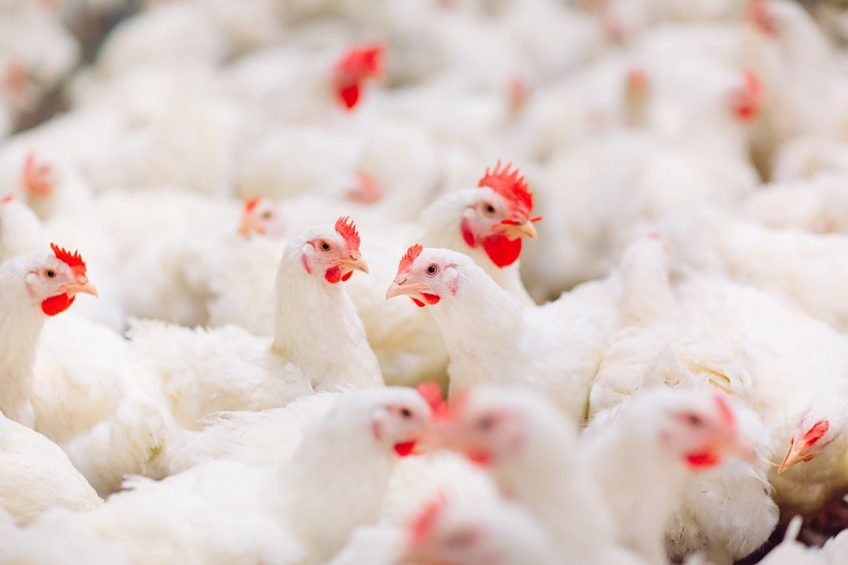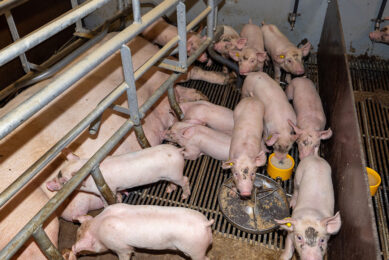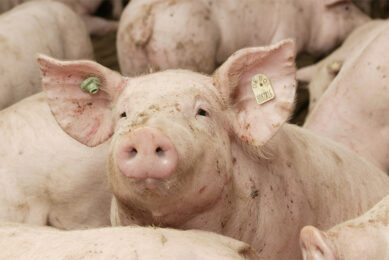Triple-strain probiotic performs as an immune modulator

Results from a study carried out on broilers using a new triple-strain probiotic show that it can perform as an immune modulator. The study was carried out based on performance under sub-clinical necrotic enteritis conditions.
The gastro-intestinal tract is both a barrier from the outside world and an immense absorption surface for the assimilation of essential nutrients for animal sustenance and growth. Therefore, it plays a key role in the success of the poultry industry. Poultry have superior feed efficiency metrics compared to other animals. Considering this high level of nutrient efficiency, the importance of the GIT is accentuated.
A healthy GIT
Another vital function of the GIT centres on the immune system. It is estimated that 70% of the chicken’s total immune system is located there. Science has recently revealed many amazing functions of the gastro-intestinal immune system, over-and-above its basic action of preventing disease exposure. Thus, a healthy gastro-intestinal system is essential for numerous life-sustaining functions. There are several ways scientists measure the health of the gastro-intestinal immune system. One way is to analyse the physical shape and structure of the intestine. For example, it is well documented that probiotics increase the length of the villi and the depth of the intestinal crypts. Also, this research indicates that goblet cell numbers can be influenced by the application of feed probiotics. These structural changes provide limited information on the functioning of the entire immune system.
Measuring the numerical balance of immune cell populations is another criterion used to assess the immune system. 2 cell types commonly examined are CD4 and CD8 cells. CD is the abbreviation for ‘Cluster of Differentiation’. These cell types are further categorised numerically as they further differentiate to more active and mature immune cells. A proper balance and population of these cells results in a well-functioning immune system. A Bacillus subtilis probiotic has shown favourable effects on the CD4/CD8 ratio in the intestine.
Impact on cytokines
A commonly used immune-functionality technique is the examination of levels of cytokines. Cytokines are the communication substances secreted and received by cells in the body, particularly regarding immune function regulation. Research was conducted to measure the effect of a new 3-strain Bacillus-based probiotic (GalliPro Fit) on the immune system, particularly investigating the impact on cytokines. In this trial, broilers were the study animal and a mild NE (Necrotic enteritis) challenge was included to better investigate cytokine levels and influence of the probiotic in the face of a pathogenic event. The experimental design is as follows: 36 pens were populated with 50 day-old birds each. There were nine repetitions for each of the four treatment groups: negative control T1, negative control + probiotic T2, positive control T3, positive control + probiotic T4. The NE challenge consisted of the addition of C.perfringens into empty drinkers at a dose of approximately 1×108 CFU/ml drinking water on days 18, 19, and 20.
Figure 1 – Cytokines gene expression based on Mean Fold Change.

On day 21, 3 random birds were sampled for intestinal cytokine gene expression. The pro-inflammatory cytokines IL-1b, IL-18, IL-6, and IL-12b and the regulatory cytokine IL-10 were assayed (Figure 1). The quantification shown in the figure was determined for each sample by comparing the number of cycles required to cross a certain threshold of fluorescence (Ct). A mean 2-fold or greater change of cytokine activity is considered significant. The NE challenge group receiving the probiotic (T4) showed significant upregulation of IL-1b, IL- 6, and IL-18. These cytokines are pro-inflammatory and anti-inflammatory. Of the 3 other treatment groups, only T3 (NE challenged, but not fed the probiotic) showed a significant upregulation of IL-6. This is an expected result and indicates a normal, initial inflammatory response effect produced by the NE challenge. The 2 groups not receiving the NE challenge showed no upregulation of the cytokines. There was no expression of IL-12b and no significant upregulation of IL-10 for any of the treatment groups. The lack of IL-10 upregulation is consistent with previous reports regarding NE and immune responses to the disease.
Priming the immune response
These data indicate the 3-strain Bacillus-based probiotic GalliPro Fit ‘primes’ the immune response. The treatment group receiving the probiotic and no NE challenge showed no up-regulation of the pro-inflammatory cytokines, thus maintaining normalcy but not stimulating the immune system. In the presence of the NE challenge, the probiotic treated group showed significant enhancement of the intercellular cytokines. This demonstrates the specific activity of the 3-strain Bacillus-based probiotic to enable the triggering of these defence mechanisms in the face of a disease challenge. Another finding is that the cytokine gene activity was found to be greater in the caecum versus the duodenum. This is consistent with what has been seen with other immune modulators. A selective functional activity is suggested by these results. IL-18 induces IFN (interferon-gamma) mediated immunity, ultimately enhancing antibacterial immune responses. IL-6 and IL-1B induce the acute phase response, particularly in the face of a bacterial infection. They also mediate the inflammatory response.
The significant activation of these cytokines in birds receiving GalliPro Fit indicate an enhanced immune response toward normalcy.
Immune modulation properties
The GalliPro Fit probiotic performed as an immune modulator. IL-1b, IL-6, and IL-18, as a group, are upregulated in the T4 group, but not in the other groups; demonstrating probiotic’s immune modulating properties. The 3-strain Bacillus-based probiotic modulated the immune response toward normalcy. This is demonstrated by the lack of upregulating IL-10 in the 2 treatments receiving the probiotic (T2, T4). There is no up-regulation of gene expression of the pro-inflammatory cytokines in the non-challenged treatment groups receiving the probiotic (T1, T3). Thereby showing no adverse immune system stimulation by the probiotic in the absence of a challenge. To conclude, there is no additional energy spent when it is not necessary and much needed nutrients can be directed for optimal animal growth.
References available on request
Author:
Christophe Bostvironnois, DVM – Chr. Hansen, Hoersholm, Denmark
 Beheer
Beheer





 WP Admin
WP Admin  Bewerk bericht
Bewerk bericht